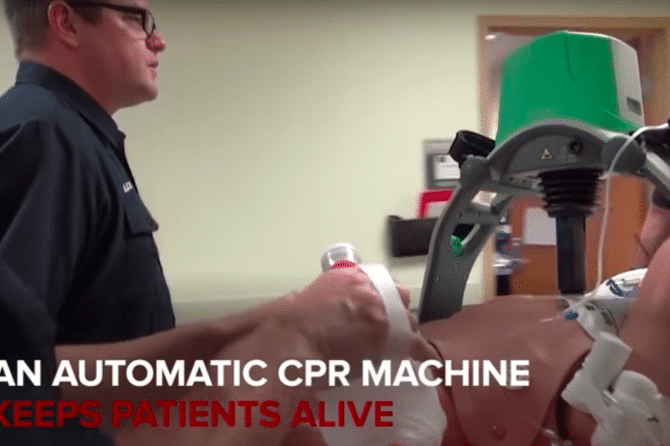
Higher SCA Survival Rate of 40 percent with New Study
A new protocol that proves to have higher SCA survival, tested by the Ohio State University Wexner Medical Center has proven to increase higher cardiac arrest survival rate with 40%.
Before adding an Automated CPR device (such as ZOLL Autopulse or LUCAS 3) to the patient before going to the hospital, their EMS provider informs the hospital before arrival that three shocks haven’t been successful to restart the heart. The patient then will undergo ECPR which stands for extracorporeal cardiopulmonary resuscitation, where the patient’s blood is passed through a device that oxygenates the blood supply in combination with getting automatic CPR.
This way the Sudden Cardiac Victim can skip the Emergency room and go directly to the heart catheterization department and get connected to the ECMO machine to detect blockage of the arteritis. It has increased the sca survival rate by up to 40%.
If this protocol gives a higher SCA Survival rate, we think this should be used worldwide!
COLUMBUS, Ohio — A new protocol being tested by a university medical center is increasing cardiac arrest survival rates from zero to around 40 percent.
The Ohio State University Wexner Medical Center is teaming up with the Columbus Division of fire to test the extracorporeal cardiopulmonary resuscitation (ECPR) protocol, which is initiated if EMS providers are not able to restore a normal rhythm after shocking the heart three times.
It’s astounding that patients are able to fully recover and walk out of the hospital when they would have been pronounced dead in the field before this protocol was in place,” Dr. K. Dean Boudoulas said.
Under the protocol, EMS providers alert the hospital before connecting the patient to an automatic CPR device to preserve brain and organ function while en route to the hospital.
When the patient arrives, they can bypass the emergency room and go straight to the heart catheterization lab to be connected to an ECMO machine.
This allows the heart and lungs to rest while doctors perform a heart catheterization to find the problem, which is usually a blocked artery,” Dr. Bryan Whitson said.
Officials hope to make this protocol the standard for treating cardiac arrest patients.


Leave a reply